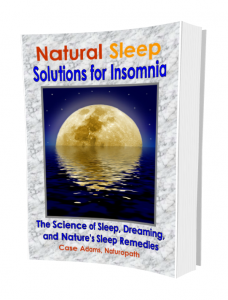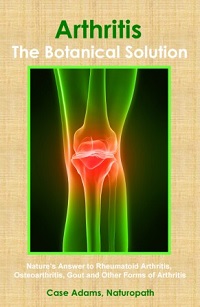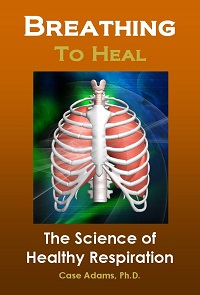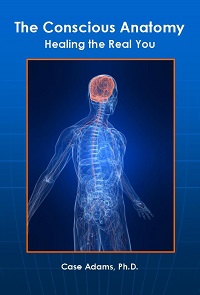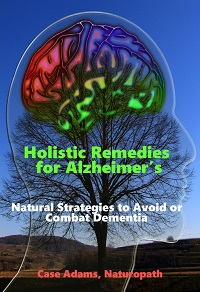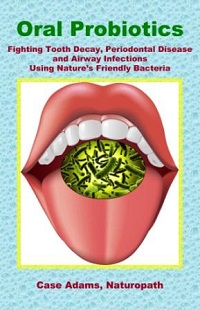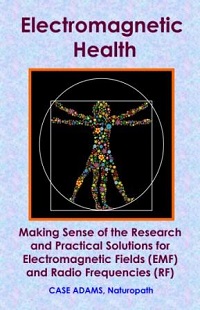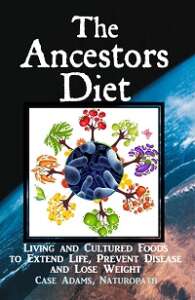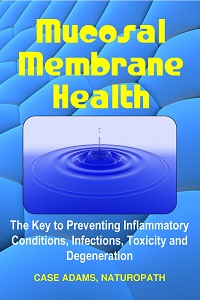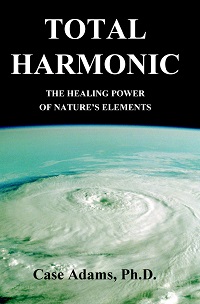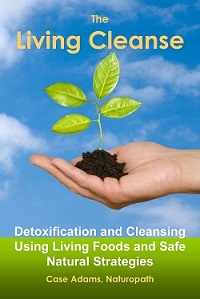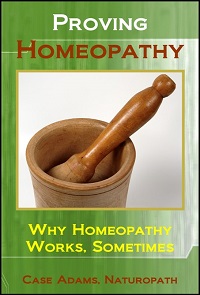Night Owls Tend to Die Sooner, Suffer More Disease

Waking earlier is better for our health.
Staying up late and sleeping in can be fun, and the internet is producing more night owls around the world. Yet multiple studies are showing that night owls tend to suffer more heart disease, eat worse diets, suffer more from depression and bipolar disorder. Night owls also tend to die sooner according to the research.
To some degree, these outcomes may be linked, as we’ll discover in this article. But it is important to know that most of the findings were separated from the effects of inadequate sleep. But as we’ll discover below, inadequate sleep does indeed have a compounding effect.
Definitely, staying up late and sleeping in also relates to our daylight hours and our circadian rhythms. This circadian rhythm aspect is reflected by researchers referring to the dichotomy of evening or morning persons as “chronotypes.”
Let’s discuss this further after reviewing the latest research findings on the subject.
In this article
‘Evening persons’ suffer more disease
A 2018 study from the Northwestern University School of Medicine and the UK’s University of Surrey surveyed 433,268 people to determine whether they were morning persons or evening persons.
The research found that 27 percent of the people were identified as ‘definite morning type’ persons, while 35 percent were ‘moderate morning types.’ The study found that 28 percent were ‘moderate evening types’ and 9 percent were ‘definite evening types.’ These four chronotypes allowed the researchers to compare the study participants.
The researchers followed the participants for six-and-a-half years. They recorded instances of psychological illness, heart disease, diabetes and death (mortality) among the population during the six-plus years.
The researchers compared all the chronotypes, but the ‘definite morning’ versus the ‘definite evening’ types were closely analyzed.
The researchers found those who were definite evening types had a 94 percent increased incidence of psychological disease compared to definite morning types. Evening persons also had a 30 percent higher incidence of diabetes.
The evening types also suffered 23 percent more from gastrointestinal issues. They also had 25 percent more neurological conditions and 22 percent more respiratory conditions.
Furthermore, the night owls – definite evening types – had a 10 percent greater incidence of death during the period compared to the definite morning types.
Night owls suffer more depression
The above study is consistent with another study that focused on chronotype and depression from the University of Warsaw. The researchers studied university students and found that morning-type persons suffered from significantly less depression compared to the evening type students.
There were three elements of the depressive symptoms established by this study. They included somatic depression, interpersonal relationships and positivism. The researchers found that morning type students suffered less depression of all three aspects. Morning types had greater positivism and better interpersonal relationships. They also had less incidence of somatic depression compared to night owls.
Bipolar disorder associated with chronotype
A number of studies have focused on the relationship between morning or evening types and bipolar disorder. The research has been illuminating, to say the least.
A number of studies have found a relationship between being a night owl and bipolar disorder. A 2017 review of research from Brazil’s Federal do Ceará University found 42 studies that investigated bipolar disease and circadian rhythm and/or chronotype. The researchers stated:
“In conclusion, disruption in circadian rhythm and eveningness are common in bipolar disorder.”
“Eveningness” is a research term relating to being a night owl. But this doesn’t mean that every person with bipolar disorder is a night owl.
For example, in a 2018 study from McGill University’s Department of Psychiatry, researchers investigated bipolar disease and chronotype. They studied 53 patients diagnosed with bipolar disorder, and found that 24 percent were definite evening persons. As suggested by the UK study, the general population tends to be in the range of 9 percent night owls.
But there may be some other form of circadian rhythm disruption in bipolar disorder as found in the review.
In this regard, a study from the Portugal’s Porto Medical School reviewed research related to circadian rhythms and bipolar disorder. They found that a number of studies found bipolar disorder related to altered melatonin levels, cortisol rhythms, sleep disruption and body temperature.
Chronotype linked to heart disease
A 2017 study from the University of Pennsylvania and the University of Delaware examined data from 439,933 people from the United Kingdom. This study compared sleep duration as well as chronotypes.
The researchers classified ‘definite morning person’ or ‘definite evening persons’ as well as ‘somewhat’ morning or evening types.
They also categorized the subjects into one of three groups: ‘Short’ sleepers (less than or equal to 6 hours a nite); ‘adequate’ (7-8 hours); or ‘long’ (more than 9 hours a night).
This means the researchers could relate both the sleep duration and the evening types to heart disease risk factors.
The researchers found that night owls (definite evening types) tended to smoke more, have less physical activity and more sedentary behavior. They also tended to be more overweight or obese and had lower fruit and vegetable consumption. They also had a greater risk of cardiovascular disease – likely related to most of the above factors.
But when compared with sleep duration, it turned out that the long-sleepers had worse scores in all of these areas with the exception of tobacco use, where the short-sleeper night owls had the greatest rates of smoking – followed closely by the long-sleeper night owls.
In other words, being a night owl in itself lends to greater heart disease risks, but being a night owl and sleeping in is worse for our health.
The researchers wrote:
“… results from this study have shown that long-sleep duration interacted with evening preference to emerge as the sleep combination that had the highest, or next to the highest, prevalence and odds (as compared to adequate sleepers with morning preference) for all five cardiovascular risk factors examined (tobacco use, physical inactivity, high sedentary behaviour, obesity/overweight and eating < 5 daily servings of fruit and vegetables). Whereas adequate sleep duration with a morning, or somewhat morning, preference was associated with the lowest prevalence and odds for all risk factors, except fruit and vegetable intake (where short-sleep and morning preference had the lowest prevalence and odds).”
Are you a morning type person or a night owl?
For those who sometimes stay up late, this is a more complicated question. It isn’t related directly to staying up late. It is also related to when we get up in the morning. Dr. Susan Krauss Whitbourne gives us the following self-test to determine whether we are a definite night owl, a morning person, or somewhere in between:
1. Considering only your “feeling best” rhythm, at what time would you wake up if you were entirely free to plan your day?
5:00-6:30 a.m. [5 points]
6:30-7:45 a.m. [4 points]
7:45-9:45 a.m. [3 points]
9:45-11:00 a.m. [2 points]
11:00 a.m.-12:00 (noon) [1 point]
2. During the first half hour after waking in the morning, how tired do you feel?
Very tired [1 points]
Fairly tired [2 points]
Fairly refreshed [3 points]
Very refreshed [4 points]
3. At what time in the evening do you feel tired and in need of sleep?
8:00-9:00 p.m. [5 points]
9:00-10:15 p.m. [4 points]
10:15 p.m.-12:30 a.m. [3 points]
12:30-1:45 a.m. [2 points]
1:45-3:00 a.m. [1 point]
4. At what time of day do you think that you reach your “feeling best” peak?
5–8 AM (05–08 h) [5 points]
8–10 AM (08–10 h) [4 points]
10 AM–5 PM (10–17 h) [3 points]
5–10 PM (17–22 h) [2 points]
10 PM–5 AM (22–05 h) [1 point]
5. Which one of these types do you consider yourself to be?
Definitely a morning type. [6 points]
Rather more a morning type than an evening type. [4 points]
Rather more an evening type than an morning type. [2 points]
Definitely an evening type. [0 points]
NOW SCORE YOURSELF:
Just add up the points from above, and this is the key to show what chronotype you most likely are:
22-25 Definitely Morning (DM)
18-21 Moderately Morning (MM)
12-17 Neither (N)
8- 11 Moderately Evening (ME)
4-7 Definitely Evening (DE)
The “neither” type above is considered the standard circadian profile according to other research. This is considered as someone who goes to bed between 11 pm and midnight and wakes up between 7 am and 8 am. This also means getting somewhere between 7 and 8 hours of sleep – which is in the adequate zone.
This is linked to a 2012 study (Thun et al. see references below) that inventoried the seven types among a population of 166 people.
The link between a healthy circadian cycle and the sun
You might be wondering why the time you go to sleep and the time you wake up are important. The issue is how much daylight we are experiencing, because daylight affects our circadian rhythms.
Yes, the preponderance of research identifies relationships surrounding the amount of natural sunlight – or daylight – we get every day. How much sunlight/daylight we receive relates directly to our moods, our activities and subsequently, our health.
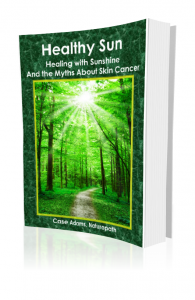
Learn the benefits of the sun and how to help prevent skin cancer while supporting this ad-free website.
It is not an accident that the University of Pennsylvania research above links our chronotype with activities that increase our disease risk – even mortality. In other words, those who don’t have adequate sunlight tend to eat more unhealthy foods and tend to have more sedentary activity. And these relate directly to disease.
Yes, these explain how the night owl – who tends to wake up later and thus experience less sun – will tend to have a greater risk of diabetes, heart disease and depression.
Bipolar disorder may be the canary in the coal mine for night owls, because bipolar is also related directly in the research to circadian disruption such as melatonin, cortisol and body temperature cycles.
This is also related to depression symptoms, as confirmed by a 2017 Russian study that tested seasonal affective disorder (SAD) in depression using the winter and summer seasons.
These cycles, as other research has showed, are also linked to our behavior and what we eat. Those whose cycles are better adjusted – by experiencing adequate daylight time each day – will naturally have better health behavior as a result.
This has been illustrated by a number of studies, many of which have been done on shift-workers. The takeaway here is that a lack of daylight hours disrupts our circadian cycle, which in turn leads to poor health consequences such as the ones mentioned above.
Can we adjust our chronotype?
For those who are night owls or evening types, the ability to change this seems impossible. But yes, it can be done. It is simply a matter of adjusting our circadian phases with the use of sunlight.
As I discussed in detail in my book on insomnia, we can easily adjust our circadian rhythm phases with a staged use of sunlight.
Hint: The process is similar to the process of adjusting our circadian rhythm phases after a dose of long-distance airline travel. See the book for more the precise method.
Once we have adjusted our circadian rhythm, there some discipline will be required. This meaning cycling down our activities towards that optimal bedtime and sleep time. But at least our circadian rhythms will cooperate.
This doesn’t necessarily mean that all of us have to go to sleep between 11 pm and midnight. As I also show in my book on insomnia, we don’t all have the same optimal sleep duration. Some of us naturally sleep more or less than others. So finding the optimal bedtime is worked out by figuring out our optimal sleep duration and then doing the math to find our bedtime and wake time that gives us adequate sunlight.
Then again, these relationships also have a lot to do with how much time we spend outside.
REFERENCES:
Knutson KL, von Schantz M. Associations between chronotype, morbidity and mortality in the UK Biobank cohort. Chronobiol Int. 2018 Apr 11:1-9. doi: 10.1080/07420528.2018.1454458.
Kanagarajan K, Gou K, Antinora C, Buyukkurt A, Crescenzi O, Beaulieu S, Storch KF, Mantere O. Morningness-Eveningness questionnaire in bipolar disorder. Psychiatry Res. 2018 Apr;262:102-107. doi: 10.1016/j.psychres.2018.02.004.
Melo MCA, Abreu RLC, Linhares Neto VB, de Bruin PFC, de Bruin VMS. Chronotype and circadian rhythm in bipolar disorder: A systematic review. Sleep Med Rev. 2017 Aug;34:46-58. doi: 10.1016/j.smrv.2016.06.007.
Melo MC, Garcia RF, Linhares Neto VB, Sá MB, de Mesquita LM, de Araújo CF, de Bruin VM. Sleep and circadian alterations in people at risk for bipolar disorder: A systematic review. J Psychiatr Res. 2016 Dec;83:211-219. doi: 10.1016/j.jpsychires.2016.09.005.
Jankowski KS. Morningness-eveningness and depressive symptoms: Test on the components level with CES-D in Polish students. J Affect Disord. 2016 May 15;196:47-53. doi: 10.1016/j.jad.2016.02.015.
Abreu T, Bragança M. The bipolarity of light and dark: A review on Bipolar Disorder and circadian cycles. J Affect Disord. 2015 Oct 1;185:219-29. doi: 10.1016/j.jad.2015.07.017.
Putilov AA. State- and trait-like variation in morning and evening components of morningness-eveningness in winter depression. Nord J Psychiatry. 2017 Nov;71(8):561-569. doi: 10.1080/08039488.2017.1353642.
Patterson F, Malone SK, Grandner MA, Lozano A, Perkett M, Hanlon A. Interactive effects of sleep duration and morning/evening preference on cardiovascular risk factors. Eur J Public Health. 2018 Feb 1;28(1):155-161. doi: 10.1093/eurpub/ckx029.
Thun, E., Bjorvatn, B., Osland, T., Steen, V., Sivertsen, B., Johansen, T., & … Pallesen, S. (2012). An actigraphic validation study of seven morningness-eveningness inventories. European Psychologist, 17(3), 222-230. doi:10.1027/1016-9040/a000097
Reutrakul S, Knutson KL. Consequences of Circadian Disruption on Cardiometabolic Health. Sleep Med Clin. 2015 Dec;10(4):455-68. doi: 10.1016/j.jsmc.2015.07.005.
SK Whitbourne. Morning Person or Evening Person? It’s Time to Find Out. Psy. Today. 2012. June.

